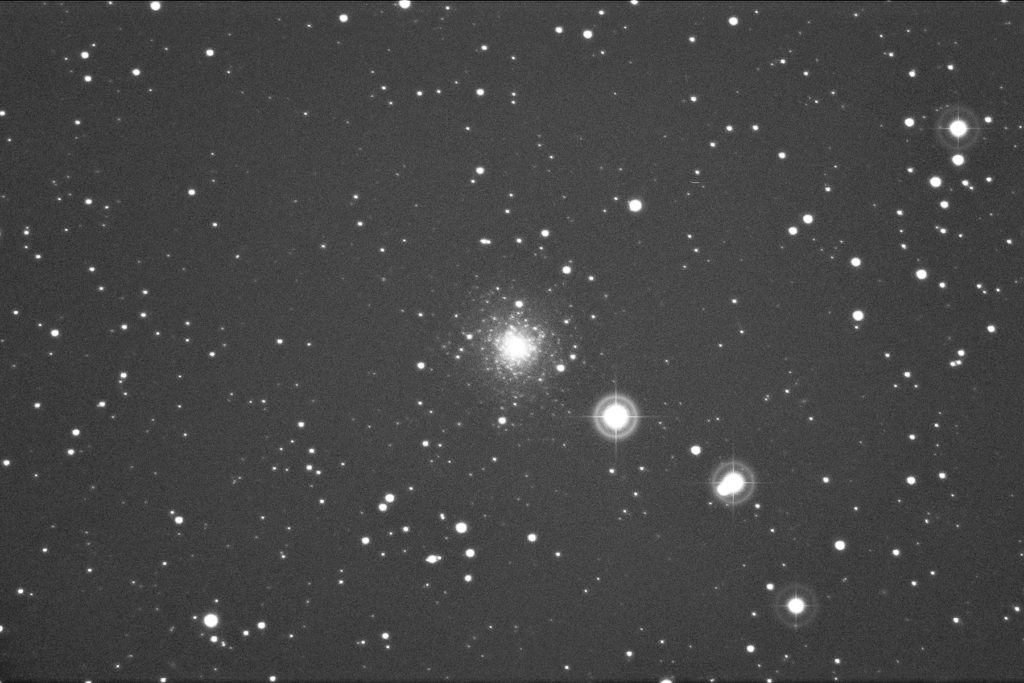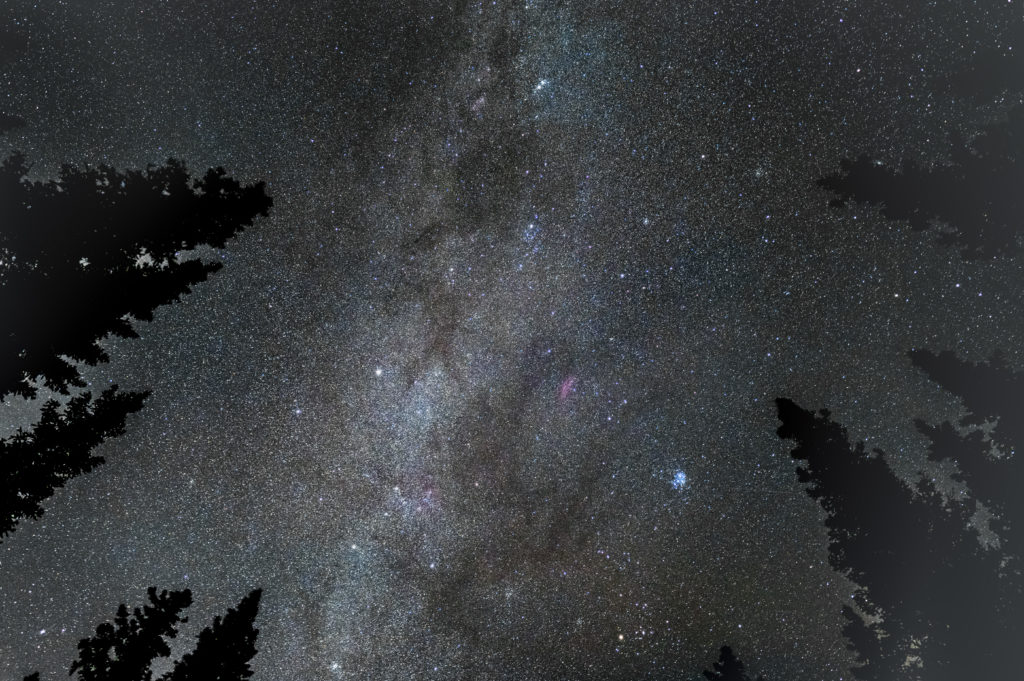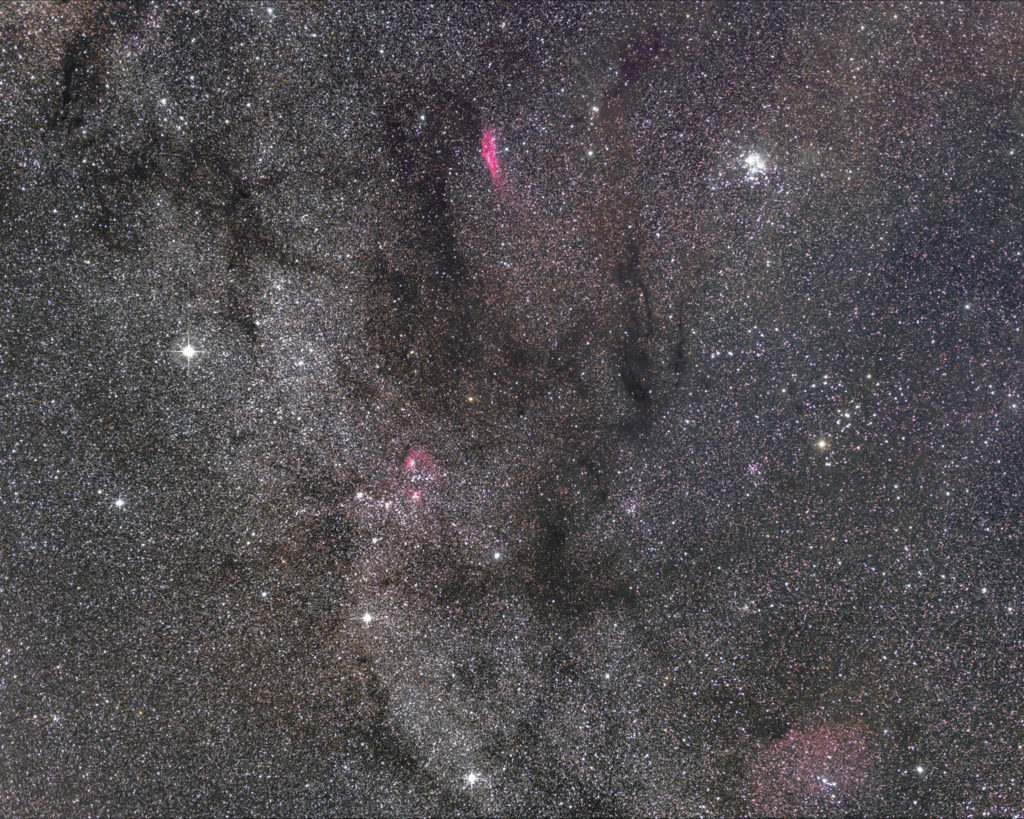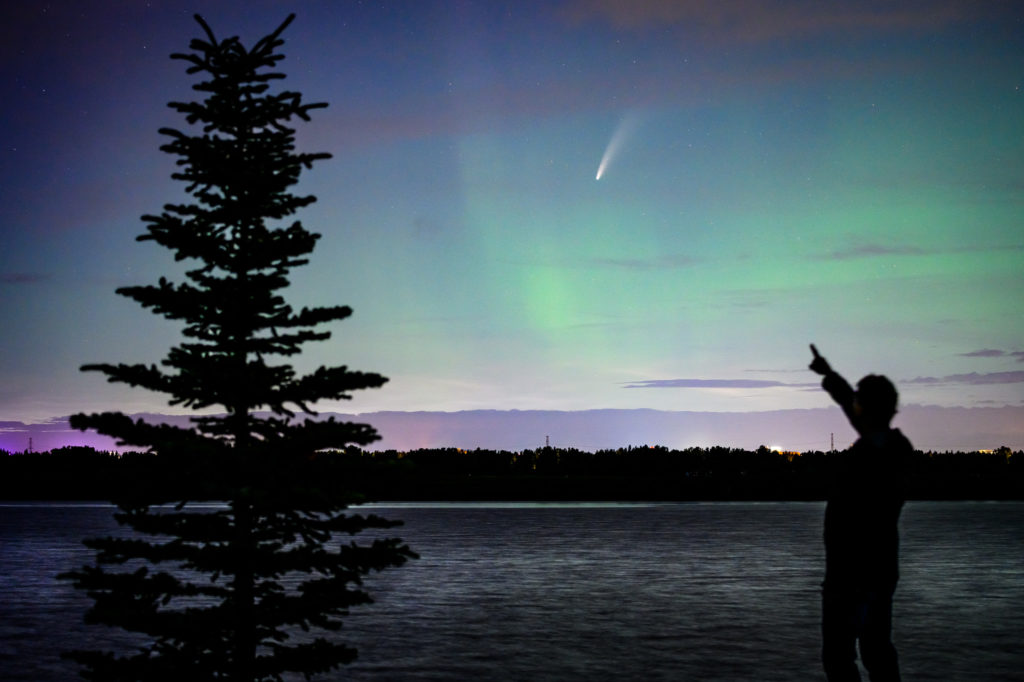
When it comes to galaxies, gravity and Newton’s first law of motion often combine to put the finest earthbound sculptors to shame. Take the galaxies NGC 2936 and NGC 2937, for instance. Here we see an everyday spiral galaxy bent and molded by the gravitational influence of a featureless elliptical companion galaxy into a graceful arc of stars and gas and dust a hundred thousand light years long. Together, the two bear a remarkable resemblance to a mother penguin holding watch over a shimmering egg. It’s one of the most beautiful galaxy pairs in the heavens [Read more…] about Dancing Galaxies
Share This:


